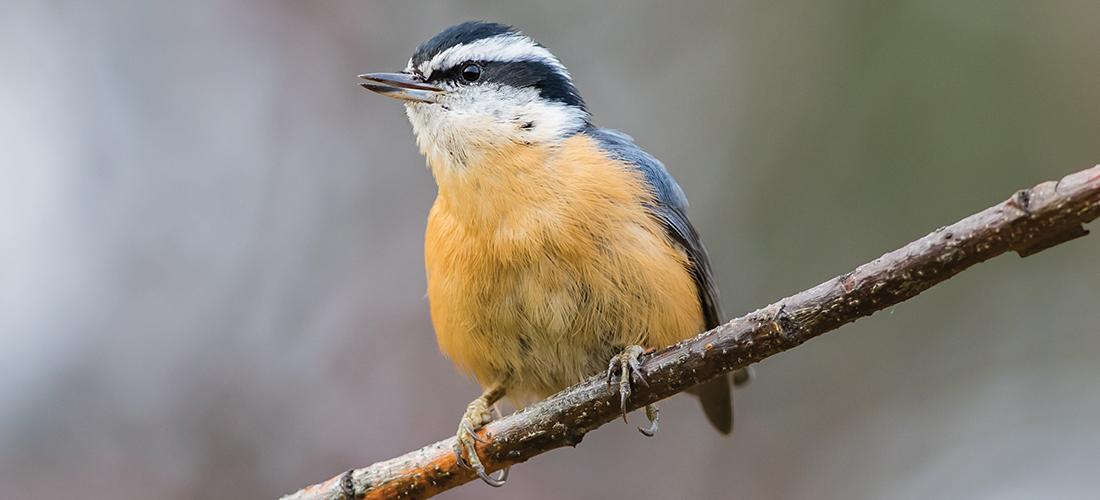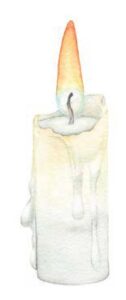
O, Tannen-Bird!
The feisty red-breasted nuthatch flocks to North Carolina’s evergreens in winter
By Susan Campbell
Every few years, certain species of birds show up in the South when their food supply to the north becomes scant. This winter seems to be one of those years for the red-breasted nuthatch. Weighing in at only a few ounces, these feisty songbirds travel in small groups, typically moving during the cooler months from Canada’s 1.5-billion-acre boreal forests into the northern coniferous forests of the United States. As long as they can find enough seeds to sustain them through the season, they may not travel very far. But this fall, the red-breasteds’ favorites, found in spruce and fir cones, are already hard to come by. Therefore, they have begun to move well southward in search of suitable alternatives and can now be found in forested areas across North Carolina.
Red-breasted nuthatches are easy to recognize with their white eyebrows and rusty colored undersides. Like all nuthatches, they have gray backs and short legs and tails, along with a distinctive pointed, upturned bill. It’s great fun watching these birds crawling forward, sideways or upside down in search of food. And they are experts at clinging on the tippy-tops of branches as they hunt for their next meal. Strong legs and sharp claws enable red-breasteds to navigate the challenging terrain of evergreens, and their specialized bills work well to pry out seeds that other birds cannot reach. They adeptly are able to ferret out seeds from the smaller cones of cedars, hemlocks and larches. Here in our area, the sizable cones of loblolly and longleaf are easy pickings for these ravenous little birds.
This species has a very distinct vocalization, like its cousins, the white-breasted and brown-headed nuthatches, which are common here in the Sandhills and Piedmont. Red-breasted nuthatches do not sing but rather call frequently. Listen for a horn-like “yank, yank” coming from the treetops. You are much more likely to hear this bird before you see it. But individuals may be mixed in with chickadees and titmice traveling through the area. Any location with abundant pines, such as Weymouth Woods Sandhills Nature Preserve or the edge of Fort Bragg or the Sandhills Game Lands, is prime territory for these little birds from now through February. I am hoping that our winter banding activities will include capture of at least a few individuals in the next couple of months. We have only been fortunate enough to study a couple close-up one winter in 2012, which was the last big invasion of the species this far south.
Red-breasted nuthatches readily do come to bird feeders. They are attracted to oil-rich sunflower seed above all else. They will, however, also take advantage of suet especially if it contains peanut butter (as mine always does). You may find them attempting to monopolize your feeding station and bullying other birds — even larger birds such as cardinals. Defending food sources is a big part of daily life for these small guys and gals who year round live much of their lives on the edge. Regardless, I am looking forward to a few of these winter visitors finding my offerings this winter. Their colorful appearance and feisty behavior always make me smile. PS
Susan would love to receive your wildlife sightings and photos. She can be contacted by email at susan@ncaves.com.





